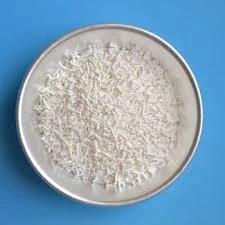
Isopropyl Alcohol in Ultrasonic Cleaners | Effective Cleaning Solutions
Using Isopropyl Alcohol in Ultrasonic Cleaners
Ultrasonic cleaners are versatile devices widely used in various industries for their effective and efficient cleaning capabilities. They utilize high-frequency sound waves to create millions of tiny bubbles in a cleaning solution, which implode with immense force, dislodging contaminants like dirt, grease, and grime from surfaces. While there are numerous cleaning solutions available, isopropyl alcohol stands out as a popular choice for many applications.
Isopropyl alcohol (IPA), also known as rubbing alcohol, is an organic compound widely recognized for its excellent solvent properties. It is effective at dissolving oils, greases, and other residues, making it an ideal candidate for use in ultrasonic cleaners, particularly for cleaning delicate electronic components, jewelry, and precision instruments. One of the primary advantages of using isopropyl alcohol in ultrasonic cleaners is its ability to evaporate quickly, leaving minimal residue behind.
When using isopropyl alcohol in an ultrasonic cleaner, it is essential to consider the concentration of the solution. Typically, a concentration of 70% isopropyl alcohol is recommended for optimal cleaning performance. This concentration provides a balance of effective cleaning power and sufficient moisture content to facilitate the ultrasonic process. Higher concentrations might evaporate too quickly or not provide the necessary lubrication for the cleaning action.
isopropyl alcohol in ultrasonic cleaner

Safety is another vital aspect to consider when using isopropyl alcohol in ultrasonic cleaners. Isopropyl alcohol is flammable, and precautions should be taken to ensure that the cleaning process is carried out in a well-ventilated area away from heat sources or open flames. Additionally, users should wear appropriate personal protective equipment such as gloves and safety goggles to prevent skin or eye irritation.
The process of cleaning with isopropyl alcohol in an ultrasonic cleaner is straightforward. First, the items to be cleaned should be placed in the cleaning basket and submerged in the isopropyl alcohol solution. The ultrasonic cleaner is then turned on, and the cavitation process begins. Depending on the level of contamination, cleaning times can range from a few minutes to half an hour. After cleaning, items should be rinsed with distilled water and dried thoroughly to prevent any potential residue.
In conclusion, using isopropyl alcohol in ultrasonic cleaners can enhance the cleaning process significantly. Its solvent properties, quick evaporation rate, and effectiveness at removing contaminants make it an excellent choice for various applications. However, safety precautions should always be adhered to, ensuring that the benefits of ultrasonic cleaning with isopropyl alcohol are fully realized without compromising user safety.
-
nitrile-rubber-honoring-strict-production-standardsNewsAug.22,2025
-
aspartame-ingredients-honoring-food-safety-valuesNewsAug.22,2025
-
fertilizer-for-balanced-plant-nutritionNewsAug.22,2025
-
cyanide-gold-processing-with-high-purity-additivesNewsAug.22,2025
-
formic-acid-in-textile-dyeing-applicationsNewsAug.22,2025
-
aluminum-hydroxide-gel-in-skincare-productsNewsAug.22,2025
-
Regulatory Compliance for Global Mining Chemicals UseNewsAug.12,2025
Hebei Tenger Chemical Technology Co., Ltd. focuses on the chemical industry and is committed to the export service of chemical raw materials.
-

view more DiethanolisopropanolamineIn the ever-growing field of chemical solutions, diethanolisopropanolamine (DEIPA) stands out as a versatile and important compound. Due to its unique chemical structure and properties, DEIPA is of interest to various industries including construction, personal care, and agriculture. -

view more TriisopropanolamineTriisopropanolamine (TIPA) alkanol amine substance, is a kind of alcohol amine compound with amino and alcohol hydroxyl, and because of its molecules contains both amino and hydroxyl. -

view more Tetramethyl Thiuram DisulfideTetramethyl thiuram disulfide, also known as TMTD, is a white to light-yellow powder with a distinct sulfur-like odor. It is soluble in organic solvents such as benzene, acetone, and ethyl acetate, making it highly versatile for use in different formulations. TMTD is known for its excellent vulcanization acceleration properties, which makes it a key ingredient in the production of rubber products. Additionally, it acts as an effective fungicide and bactericide, making it valuable in agricultural applications. Its high purity and stability ensure consistent performance, making it a preferred choice for manufacturers across various industries.





